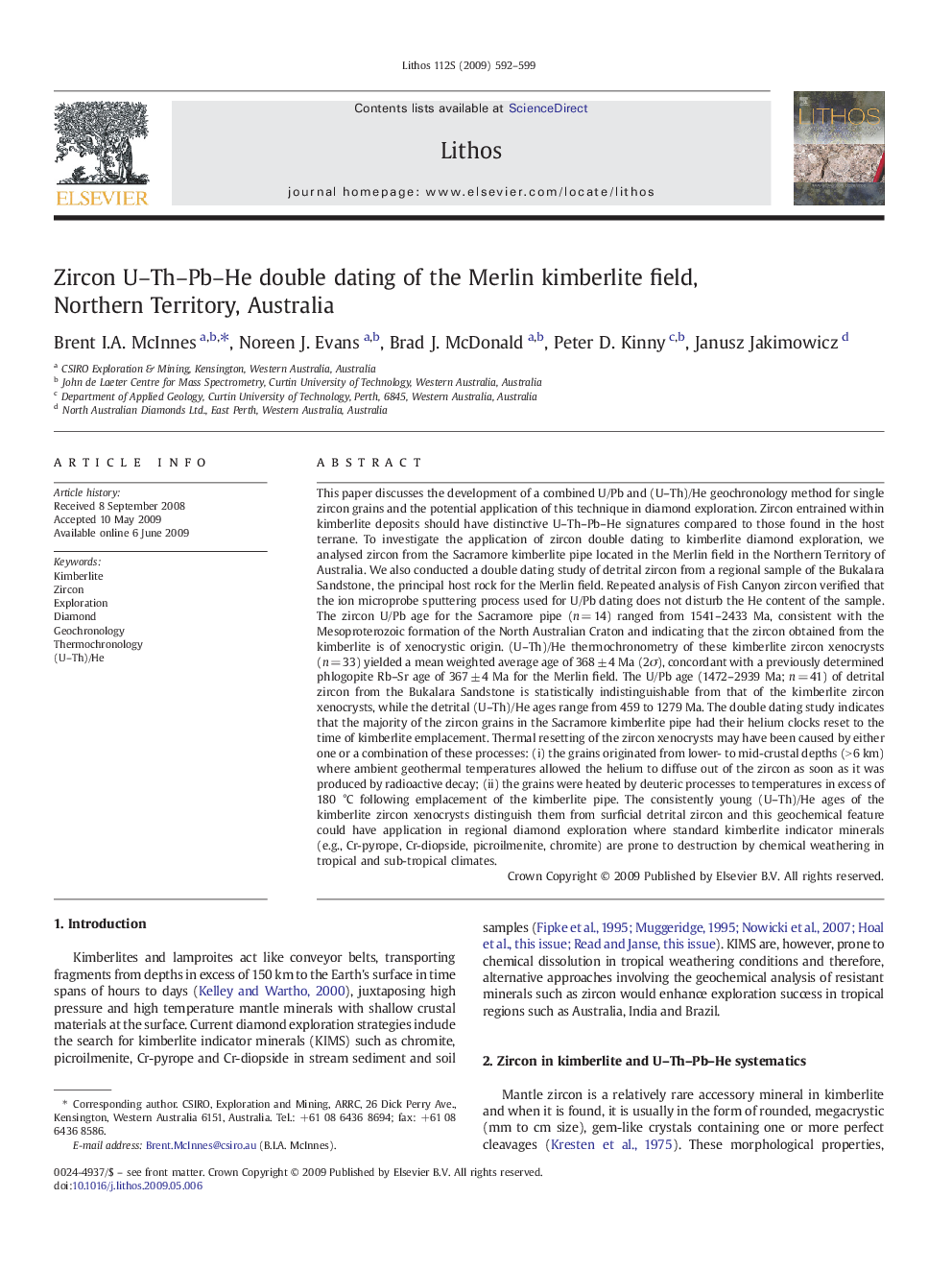| کد مقاله | کد نشریه | سال انتشار | مقاله انگلیسی | نسخه تمام متن |
|---|---|---|---|---|
| 4717293 | 1354429 | 2009 | 8 صفحه PDF | دانلود رایگان |

This paper discusses the development of a combined U/Pb and (U–Th)/He geochronology method for single zircon grains and the potential application of this technique in diamond exploration. Zircon entrained within kimberlite deposits should have distinctive U–Th–Pb–He signatures compared to those found in the host terrane. To investigate the application of zircon double dating to kimberlite diamond exploration, we analysed zircon from the Sacramore kimberlite pipe located in the Merlin field in the Northern Territory of Australia. We also conducted a double dating study of detrital zircon from a regional sample of the Bukalara Sandstone, the principal host rock for the Merlin field. Repeated analysis of Fish Canyon zircon verified that the ion microprobe sputtering process used for U/Pb dating does not disturb the He content of the sample. The zircon U/Pb age for the Sacramore pipe (n = 14) ranged from 1541–2433 Ma, consistent with the Mesoproterozoic formation of the North Australian Craton and indicating that the zircon obtained from the kimberlite is of xenocrystic origin. (U–Th)/He thermochronometry of these kimberlite zircon xenocrysts (n = 33) yielded a mean weighted average age of 368 ± 4 Ma (2σ), concordant with a previously determined phlogopite Rb–Sr age of 367 ± 4 Ma for the Merlin field. The U/Pb age (1472–2939 Ma; n = 41) of detrital zircon from the Bukalara Sandstone is statistically indistinguishable from that of the kimberlite zircon xenocrysts, while the detrital (U–Th)/He ages range from 459 to 1279 Ma. The double dating study indicates that the majority of the zircon grains in the Sacramore kimberlite pipe had their helium clocks reset to the time of kimberlite emplacement. Thermal resetting of the zircon xenocrysts may have been caused by either one or a combination of these processes: (i) the grains originated from lower- to mid-crustal depths (> 6 km) where ambient geothermal temperatures allowed the helium to diffuse out of the zircon as soon as it was produced by radioactive decay; (ii) the grains were heated by deuteric processes to temperatures in excess of 180 °C following emplacement of the kimberlite pipe. The consistently young (U–Th)/He ages of the kimberlite zircon xenocrysts distinguish them from surficial detrital zircon and this geochemical feature could have application in regional diamond exploration where standard kimberlite indicator minerals (e.g., Cr-pyrope, Cr-diopside, picroilmenite, chromite) are prone to destruction by chemical weathering in tropical and sub-tropical climates.
Journal: Lithos - Volume 112, Supplement 1, November 2009, Pages 592–599